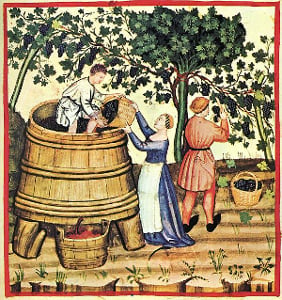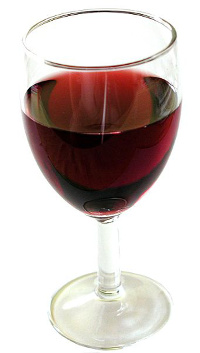 At the end of a stressful day, I like to go out on my porch with a glass of wine and enjoy the relative peace. It is easy to get caught up in the day-to-day pace of things and fail to set aside a little time to simply unwind or decompress. Recently, I came across an article that discussed the use ‘fining agents’ that caused me to rethink my evening glass of wine.
At the end of a stressful day, I like to go out on my porch with a glass of wine and enjoy the relative peace. It is easy to get caught up in the day-to-day pace of things and fail to set aside a little time to simply unwind or decompress. Recently, I came across an article that discussed the use ‘fining agents’ that caused me to rethink my evening glass of wine.
Eggs are used in wine production? All along I thought my glass of wine was made from grapes in a barrel sprinkled with some yeast. After doing some research, I discovered that not just eggs but other wine fining agents are used to remove suspended proteins and solids from wine. These substances clarify the wine before being bottled. So while looking at my Riesling, I wonder if people with egg allergies are able to enjoy a little wine without fear of reactions.
So what are some of the fining agents used in the winemaking process? Here are a few of the most common things you might have never expected to be used in wine production.
-
- Egg Whites – The albumen found in egg whites is used to clarify red wines during barrel aging. This is the oldest fining method in winemaking.
_
 Chitosan – Composed of exoskeletons of crustaceans (shrimp, crab, shellfish), is a very common agent for finishing white wines.
Chitosan – Composed of exoskeletons of crustaceans (shrimp, crab, shellfish), is a very common agent for finishing white wines.- Gelatine (gelatin) – Derived from animal protein, it is recommended for red wines to help reduce excessive tannins and astringency.
- Isinglass – Made from collagen, a protein extracted from the swim bladders of fish. It’s a very gentle fining agent, as it does not strip the flavor of the whites and blushes.
- Casein – Not necessarily used for fining, but used to clarify white wines.
_Technically, after racking (separating the fining agents and collected solids from the wine), there should be no fining agents in the wine. This means that by the time the wine reaches the bottling stage, any additional substances should be removed. However, due to the potential risk of allergic reactions from fined wines, the European Union requires all foods with potential allergens to be labeled accordingly. As of now, labeling potential allergens in the United States is voluntary but there has been current debate on whether it will be obligatory in the future.
For those who are highly allergic to lactose/dairy, eggs, or shellfish or for vegetarians and vegans, the best way to enjoy a bottle of wine without compromising your health is to check the labels, and try to stick with Old World wines (European). Cheers!
Author: R. Power
